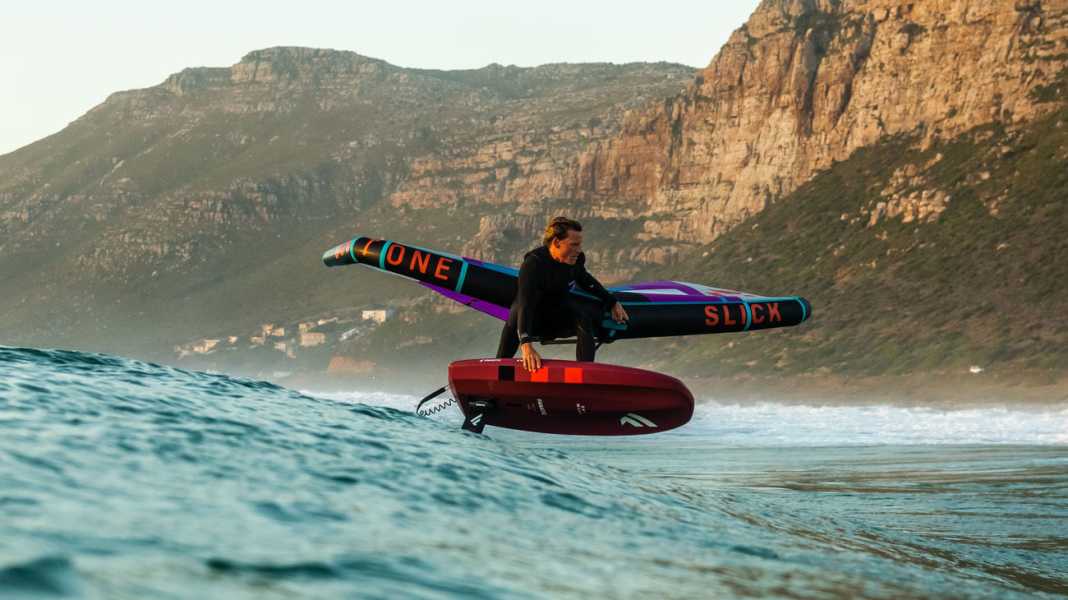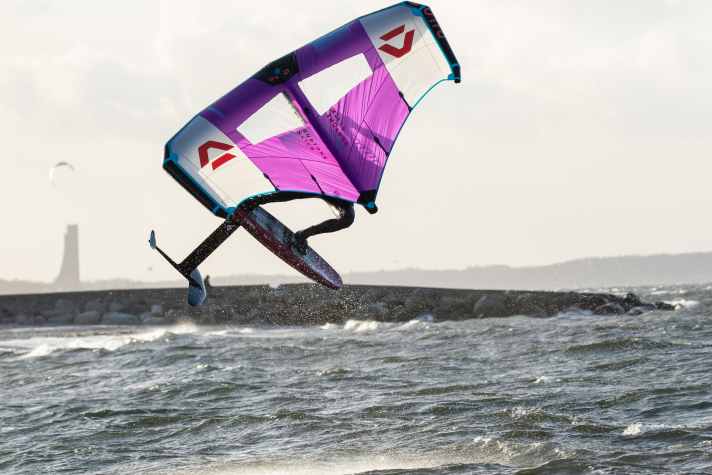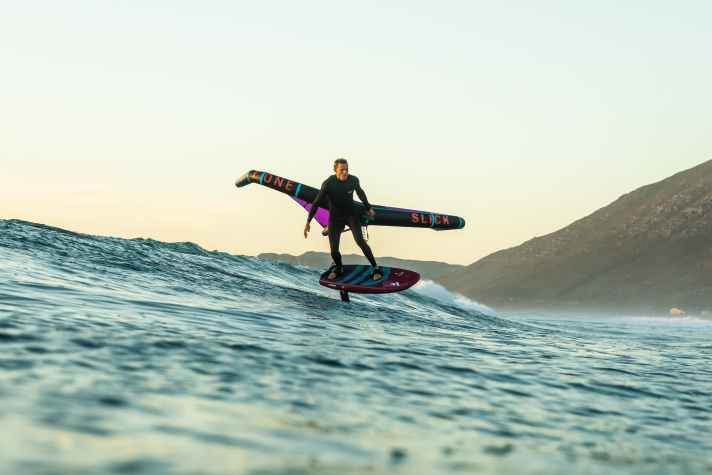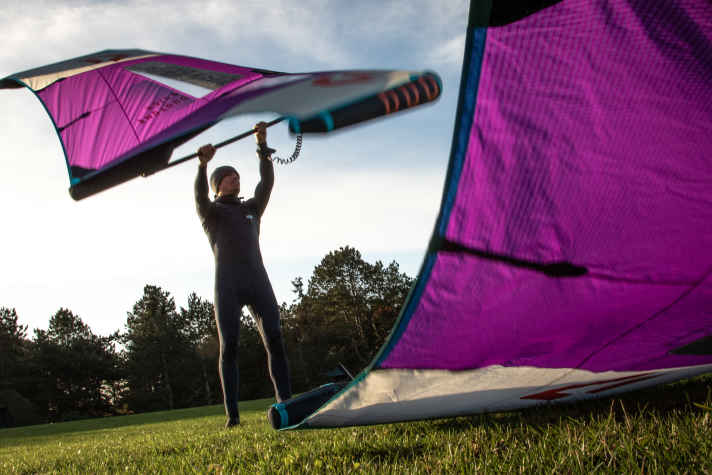
Klaas, you were involved in the development of the Wings at Duotone right from the start. What adjustments did the designers make to achieve the desired riding characteristics?
A lot (laughs)! Let's start with the outline of a wing, i.e. the outer shape. Larger wingspans are theoretically more efficient. That's why, for example, gliders have narrow wings with a large wingspan, while high-tech sailboats have long masts with narrowly cut sails. If it were only a question of optimising performance such as speed and general glide, then slim wings with a large wingspan would be ideal. But wings are a playful sport and of course the useful wingspan is limited by the height of the shoulders and arms. For this reason, we try to develop wings with a reduced wingspan that are still powerful. This can be achieved, for example, through the profile shape, the tension in the canopy or different thicknesses of the front tube.

The wingtips of wings are usually bent upwards, so the wing has a slightly "V-shaped" front tube. What influence does this design feature have?
The angle of the tube influences flight stability and neutrality when drifting, i.e. when the wing flies behind. However, as is so often the case, the handling characteristics cannot be determined by just one single design feature. The twist of the wingtips and, as already mentioned, the general tension of the wing material are other factors that can be adjusted("Canopy", the ed.).The first wings were all quite fluttery, but the wing designers are now getting a better grip on the tension in the canopy, which also improves performance. You then have more direct propulsion and more power. You also feel less delay during manoeuvres, the wing is simply not as spongy.
At the moment, there are still huge differences between the wings of different brands in terms of materials or the grip system. Where is the journey going?
It's all a huge learning process in which many brands are just starting out. Of course, we are currently putting all our energy into the development of all-round wings, i.e. wings that are designed to work for the masses. This is why we have designed our latest wings with a boom and centre strut, for example, which has huge advantages for beginners in particular. The wing always floats on top in the water and does not dive, which makes launching easier, while at the same time the wing has a free grip option thanks to the boom, which offers many advantages, especially during manoeuvres. However, it is already becoming apparent that there will be wings for specific areas of use. All-round wings for the masses, neutral and agile freestyle wings and wings that are extremely stable on the wave. And at some point, racers will probably also come onto the scene and race with more elongated wing shapes and long foil masts.
I fear the day will come when one water sportsman will be mown down because the other had no window in the wing.

To what extent can the materials used influence the driving behaviour?
The material used in the front tube area in particular has a decisive influence on how a wing feels. Stiff and thick material can contribute to the wing feeling firm and very direct. Of course, this goes hand in hand with the pump pressure and, above all, the thickness of the front tube. Less pressure makes a wing softer and easier to pump. Tightly inflated, it holds the profile a little longer in stronger winds. But ultimately, a thick tube with only 6psi inflation pressure can provide more stiffness and power than a thinner tube with the same pressure, which is why we also inflate our small wings with thinner front tubes to a harder setting.

There are also currently still major differences in terms of equipment. Many brands use windows, others don't. What is your philosophy in this regard?
In my opinion, a window is an essential feature, especially for beginners who are still preoccupied with themselves and don't yet have the time to look. Even if you often don't consciously look through the window, you subconsciously notice a lot more and don't run the risk of overlooking a surfer lying in the water. I'm afraid the day will come when a water sports enthusiast will be mown down because the other one didn't have a window in the wing.
Why are some brands so reluctant to use windows? Are the disadvantages really that serious?
The rubber-like PVC window is much heavier than the canopy material, which can add up to several hundred grams depending on the size. You are also somewhat restricted in terms of packing size because you should not fold over the windows. Nevertheless, I can't currently see any other material that would make sense to use for the windows in wings. I think you can accept the small disadvantage in terms of weight for a big plus in terms of safety and riding comfort.
Thank you Klaas for the interview!

